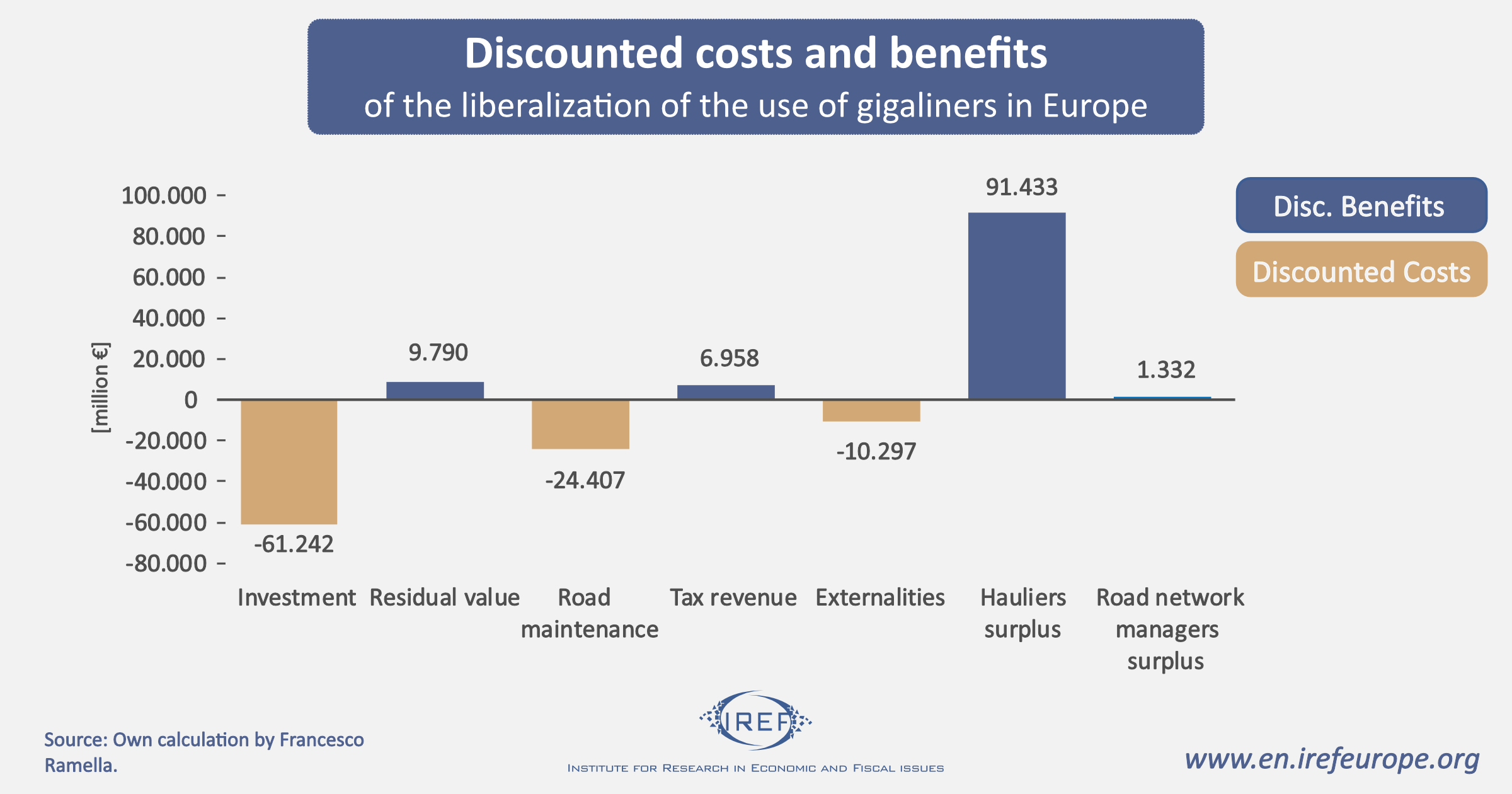
13 novembre 2024
di Francesco Ramella
The European debate
Last March, the European Parliament approved new rules on the weight and size of trucks: the total weight of single vehicles is now 44 tons (it was 40 tons). Moreover, vehicles with a total length of up to 25.25 m and a maximum weight of up to 60 tons, known as gigaliners or megatrucks, can circulate in all the European Union. In the past, permits were limited to some countries and international transport required bilateral agreements.
The resolution will have to be discussed by the European Council, which can amend it and then send it back to the European Parliament.Costs and benefits
Cost and benefits
Both rail companies and environmental activists have expressed strong opposition. They have emphasised the potential negative effects in terms of CO2 emissions and road safety resulting from increased competitiveness of road transport.
I recently carried out a cost-benefit analysis to estimate the impact of liberalization of the use of gigaliners in Europe. The benefit consists in the reduction of the unit cost (per tonne) of transport. Well, recent evidence from Germany, Sweden and the Netherlands shows that transportation cost would drop around 20% compared to traditional vehicles.
In regard to cost, one should consider the effects on the other users of the roads (traffic jams and accidents) and the community in general (air pollution, noise, CO2 emissions). The change in profits for infrastructure managers and tax revenues should also be taken into account.
In fact, the greater capacity of gigaliners would lead to fewer vehicles on the road. However, 1) part of the goods currently transported by rail would be transferred to the road; 2) lower transportation costs would lead to greater volumes (the proportional rise would be about 1.8%). Moreover, a typical gigaliner has higher consumption (and CO2 emissions) than a traditional truck. Past studies do not provide strong evidence of a difference in accidents induced by gigaliners, if one takes into account the greater volume transported. Thus, the negative impact of gigaliners only relates to the consequences of the shift from rail to road and to the traffic generated.
To make the circulation of gigaliners possible, significant investments are needed to adapt road networks, particularly bridges.
In the case of Germany, the adaptation or reconstruction of bridges could result in a cost of between 6 and 12 billion euros. The central value of this range was applied to the entire Europe in proportion to goods traffic: the total cost would thus amount to some 60 billion. The increase in network maintenance costs has been estimated at around 5% of current expenditures, which corresponds in absolute value to around 1.6 billion euros per year.A profitable investment?
A profitable investment?
All in all, the analysis shows that the new legislation would bring about positive net benefits for about 13.5 billion euros. The benefits for hauliers are just over 90 billion and an order of magnitude greater than the increase in externalities. These will decrease over time with the gradual reduction of emissions and further improvements in safety. There is a slight increase in the profits of motorway concessionaires net of the loss of rail network owners. The possible reduction in subsidies currently provided to rail transport has been ignored.
The result is very sensitive to the share of current road traffic that could be acquired by gigaliners: the breakeven is estimated at 12.7%. As mentioned above, the other relevant parameter is the necessary investment, which could actually exceed the 60-billion euro figure quoted earlier.

